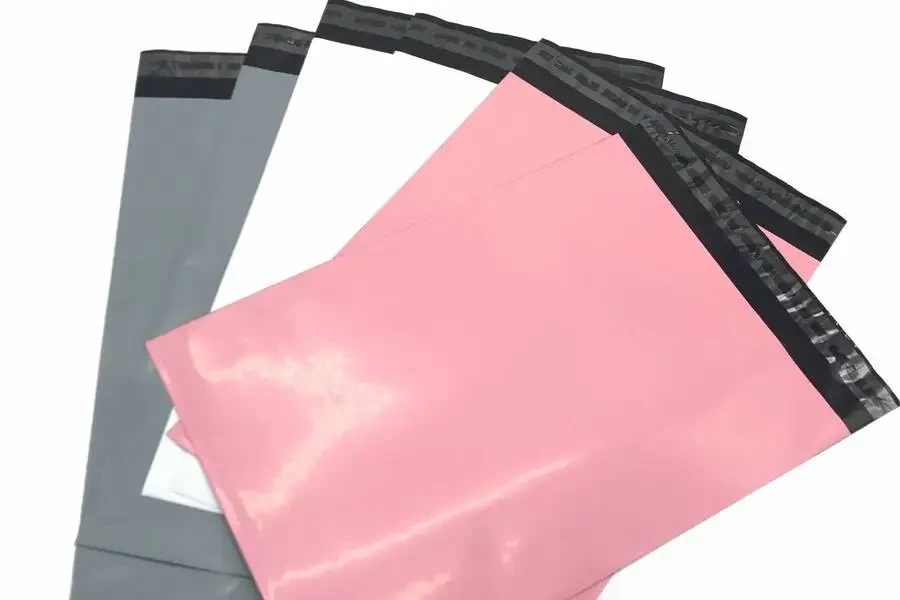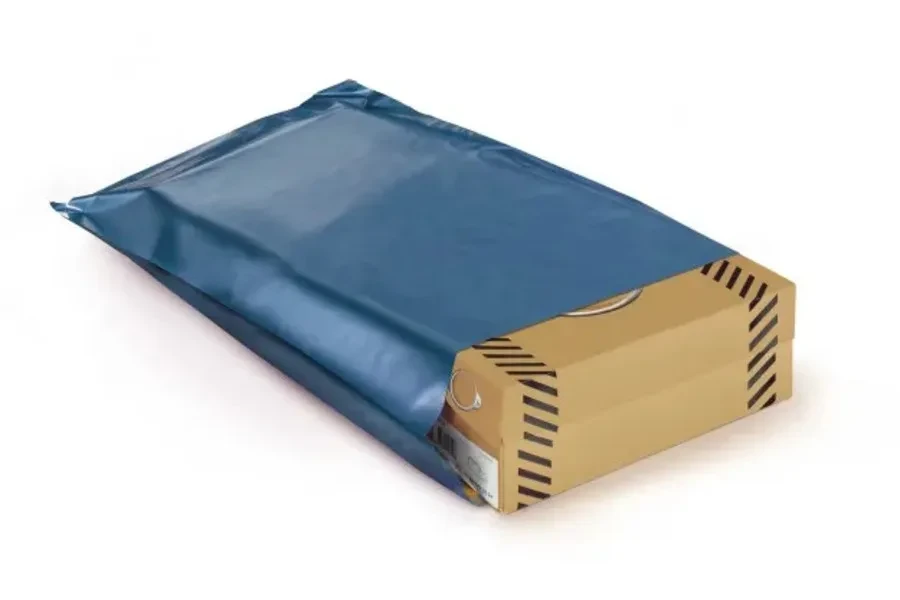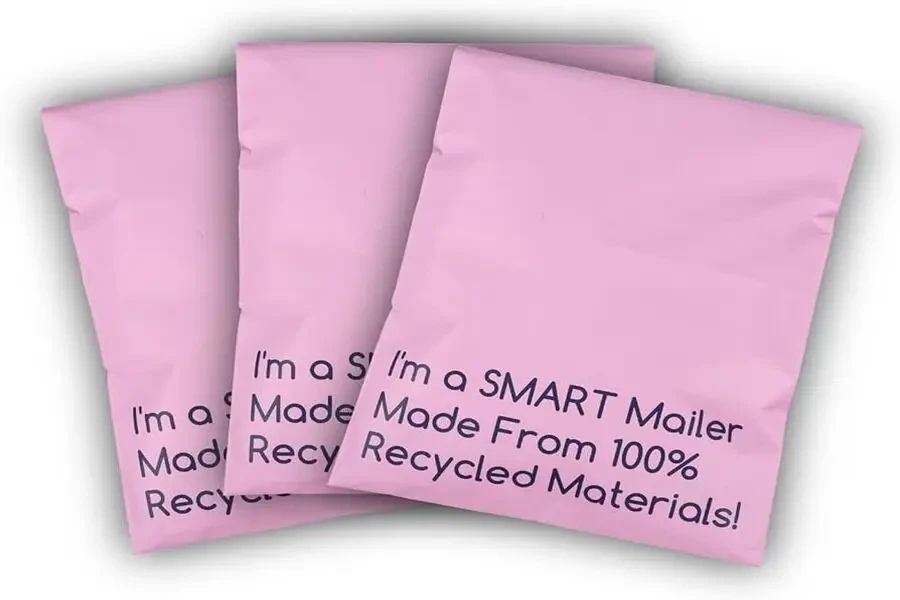The increase in ecommerce and shipping activities worldwide has increased the demand for mailing bags. With the ecommerce sector projected to generate US $3.64 trillion in 2023 and grow at a CAGR of 11.17% to reach US $5.56 trillion by 2027, we can expect that the demand will only continue to grow.
The choice of mailing bags can significantly impact the safety and integrity of shipped items and a company’s image and environmental footprint. Here we’ll take a look at how to select the best mailing bags, identifying the various types and determining what factors to consider. These decisions can help improve shipping operations, customer experience, and overall business performance.
Table of Contents
Do mailing bags have business potential?
Types of mailing bags on the market
Factors to consider when choosing mailing bags
Conclusion
Do mailing bags have business potential?
The global expansion of the ecommerce sector has prompted the mass production of mailing bags. The global mailing bags industry generated approximately US $2.7 billion in 2022 and is projected to reach US $3.9 billion by 2031, growing at a CAGR of 4.3%. These bags are used in various end-user industries due to their resistance to corrosion and moisture.
Other factors driving the demand for mailing bags include:
- Increased demand for flexible packaging
- Consumer preferences for sustainable packaging
- Ability to customize mailing bags in different sizes and designs for various end-users
- Mailing bags’ versatility and affordability
Types of mailing bags on the market

Mailing bags are designed in different sizes, styles, and materials to cater to different customer needs. For example, padded mailers can be used to ship fragile products that require added protection, while non-fragile items can be shipped in standard poly mailers. Therefore, brands must ensure that the selected mailing bags align with their business needs and values.
Lightweight poly mailers

Lightweight poly mailers are a popular choice for shipping non-fragile items such as clothing, textiles, and light accessories. The global poly mailers market is anticipated to generate US $3.1 billion in 2023 and reach US $5.3 billion by 2033, growing at a CAGR of 5.5%. The Asia Pacific region accounts for the largest market for poly mailers at 37.6%, followed by North America at 32%.
Numerous factors are driving the global surging demand for lightweight poly mailers, including:
- Expansive use in the retail sector
- They ship light, which reduces costs
- They often have a self-sealing adhesive strip for easy closure, making them convenient for both the sender and the recipient
Padded mailers

Padded mailers, also known as bubble mailers, are designed with a layer of bubble wrap or foam padding inside. This helps provide extra protection for fragile or delicate items during shipping. The bubble wrap cushions the contents and helps prevent damage from bumps and shocks during transit.
Padded mailers have a significant global demand. Future Market Insights (FMI) estimates the market to be valued at US $1.8 billion in 2023 and US $3.1 billion by 2033, growing at a CAGR of 5.2%. These mailers are commonly used for shipping items like electronics, jewelry, small glassware, or any items that require a higher level of protection than standard mailers can provide.
Eco-friendly mailers

Eco-friendly mailers are mailing bags that prioritize sustainability and environmental responsibility. They are typically made from materials that have a lower environmental impact, such as biodegradable plastics, compostable materials, or recycled content. These mailing bags are experiencing a significant increase in demand due to changing consumer habits in favor of sustainable products and packaging. For example, the market share for sustainability-marketed products accounted for 17.3% market share (+0.3% from 2021). They have a five-year CAGR of 9.43% compared to 4.98% for conventionally marketed goods.
The demand for sustainable products has increased the demand for eco-friendly mailing bags. For example, a McKinsey consumer survey showed that 60% of consumers would pay for sustainable packaging. Another example is the market growth for recycled mailing bags, which was valued at US $28.7 billion in 2022 and is projected to reach US $46.15 in 2032, growing at a CAGR of 4.9%. Eco-friendly mailers aim to reduce the use of non-renewable resources and minimize the environmental footprint associated with packaging and shipping. Europe accounts for the largest market for recycled packaging, while the Asia Pacific region, led by China and Indonesia, is projected to experience the fastest growth between 2022-2032.
Factors to consider when choosing mailing bags

The choice of mailing bags should reflect a company’s values, environmental goals, and shipping needs. They can influence customer experience and future purchasing decisions, thus selecting the right bag for your business is crucial. Below is a list of factors to consider when choosing the best mailing bags for different end-user customers.
Size, shape, and weight of the items
The size, shape, and weight of the items intended for shipping are critical factors in selecting the right mailing bags. For instance, larger and heavier items may require more robust and spacious bags, while smaller, lightweight items can be shipped in standard-sized mailers. Therefore, the size and shape of the mailing bag should comfortably accommodate products to prevent damage during transit while also minimizing shipping costs.
Safety features
Safety features in mailing bags ensure the security and integrity of the shipments. Examples of safety features to add to mailing bags include tamper-evident seals, security pouches, or RFID tracking. These safety features impact customers’ perceived value of the shipped products and the brand. In addition, they reduce the risk of loss or damage and enhance credibility.
Environmental impact
Modern-day consumers are increasingly eco-conscious. Therefore, businesses should opt for mailing bags made from sustainable materials like recycled paper, biodegradable plastics, or compostable materials. These mailers can help reduce their carbon footprint and align with environmentally responsible practices, thus appealing to environmentally conscious customers.
Laws and regulations
Laws and regulations governing packaging and shipping can vary by region and type of product. For example, the Fair Packaging and Labeling Act (FPLA) in the US requires labeling of consumer products. In this case, businesses must provide details such as commodity identity, net contents, product manufacturer’s name and location, and packer or distributor on the packaging. Therefore, companies should familiarize themselves with packaging requirements or restrictions to avoid potential legal issues or shipping delays.
Customization
Mailing bag customization allows businesses to enhance brand identity and customer experience. The packaging can include specific design elements, such as the company logo, color scheme, fonts, or sustainability information. These elements can enhance brand recognition and leave a long-lasting impression on customers.
Conclusion
The market for mailing bags shows significant growth potential, indicating an opportunity for businesses to boost revenues and brand positioning. However, selecting the best packaging option for different consumers requires consideration of numerous crucial factors, such as product size, shape, and weight. In addition, mailing bags’ visual appeal, eco-friendliness, and functionality can influence customers’ perceived value of a brand, which may affect their future purchasing decisions. Therefore, businesses should prioritize selecting the best mailing bags to elevate their success and sustainability.
If you’re looking for the latest mailing bags and related products, browse thousands of options on Alibaba.com.



